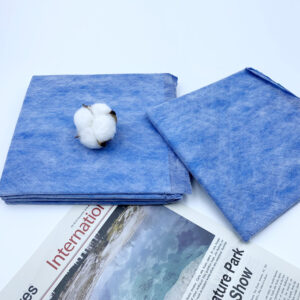Underpads, also known as bed pads, are essential for people who are dealing with incontinence issues. They provide an extra layer of protection for your mattress or furniture, and they can make cleaning up accidents much easier.
When you are shopping for underpads, here are some things to keep in mind:
- Size: Underpads come in a variety of sizes, so it’s important to choose the right size for your needs. If you are using them on a bed, make sure the underpad is large enough to cover the area where you sleep. If you are using them on furniture, choose a size that will fit the piece of furniture you are protecting.
- Absorbency: Underpads come in different levels of absorbency, so you should choose the right level based on your needs. If you have heavy incontinence, you will need an underpad with a higher absorbency level. If you have light incontinence, you may be able to use an underpad with a lower absorbency level.
- Material: Underpads can be made from different materials, such as cotton, flannel, or disposable materials. Cotton and flannel underpads are reusable and more environmentally friendly, but they will require washing after each use. Disposable underpads are convenient and easy to use, but they can be more expensive in the long run.
- Backing: Underpads can come with different types of backing, such as plastic, vinyl, or cloth. Plastic and vinyl backing are waterproof, China Underpad supplier but they can also be noisy and uncomfortable to sleep on. Cloth backing is more comfortable, but it may not be as effective at preventing leaks.
- Adhesive strips: Some underpads come with adhesive strips that keep them in place. This can be helpful if you move around a lot while you sleep or if you are using them on furniture. Make sure to choose an underpad with strong adhesive strips that will stay in place throughout the night.
- Quantity: Underpads are often sold in packs, so consider how many you will need. If you have frequent accidents, you may want to buy a larger pack to save money in the long run.
By considering these factors, you can find the right underpad for your needs and make dealing with incontinence a little bit easier.
How Do Disposable Underpad Absorb?
Disposable underpads are designed to absorb and contain moisture, such as urine, to protect the surface beneath them.
They have several layers that work together to absorb and hold moisture, including:
- Top layer: The top layer of the underpad is usually made of a soft, non-woven material that allows moisture to pass through quickly and easily.
- Absorbent core: The absorbent core is the middle layer of the underpad and is made of a highly absorbent material, such as fluff pulp or superabsorbent polymer (SAP). This layer is designed to quickly soak up moisture and hold it away from the skin.
- Waterproof barrier: The bottom layer of the underpad is usually made of a waterproof material, such as plastic or polyurethane, that prevents moisture from passing through to the surface beneath the underpad.
When a person with incontinence uses a disposable underpad, the urine or other fluids are quickly absorbed into the absorbent core of the underpad. The fluid is then held in the core, away from the person’s skin, preventing discomfort and skin irritation. The waterproof barrier on the bottom of the underpad prevents any moisture from leaking through to the surface beneath the underpad.
Once the underpad is wet, it should be disposed of and replaced with a new one to maintain hygiene and prevent the risk of infection or odor. Overall, disposable underpads are a convenient and effective solution for managing incontinence and protecting surfaces from moisture.
